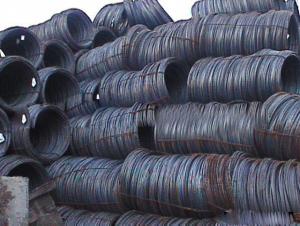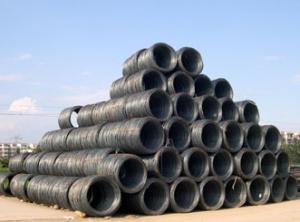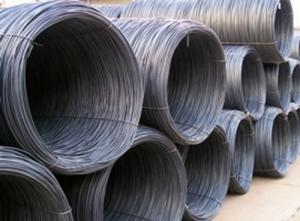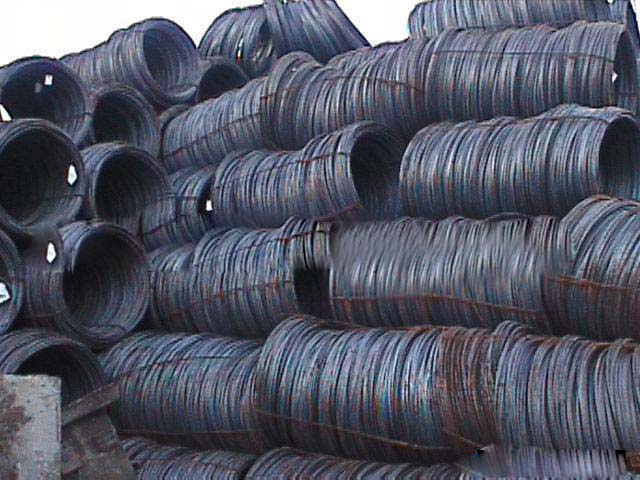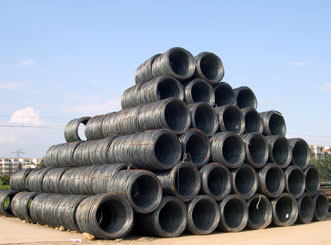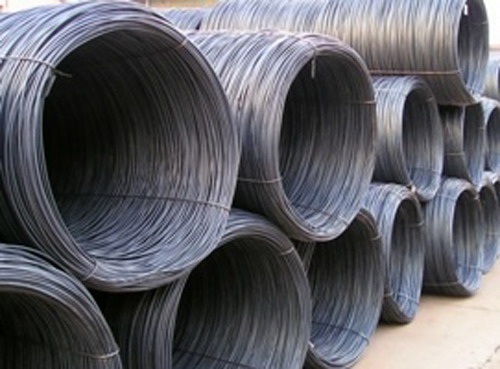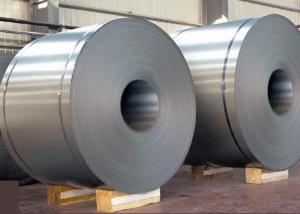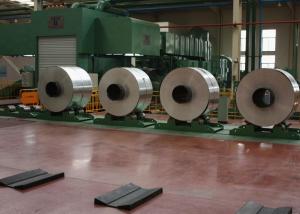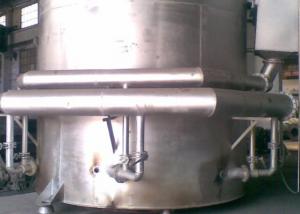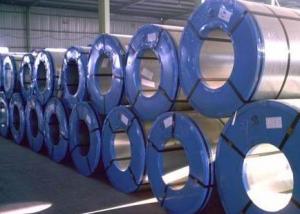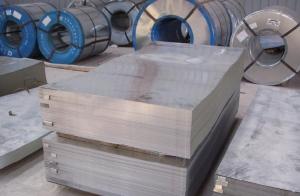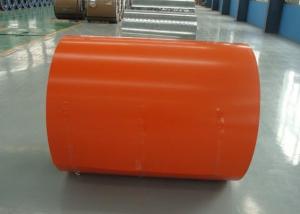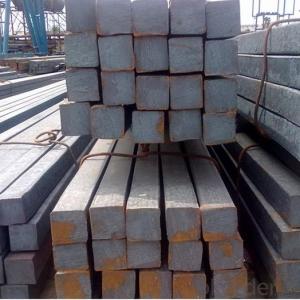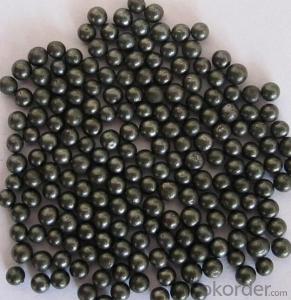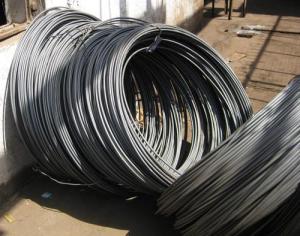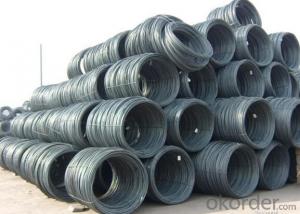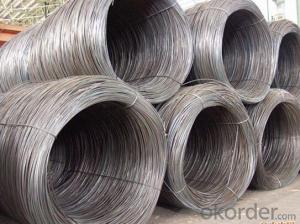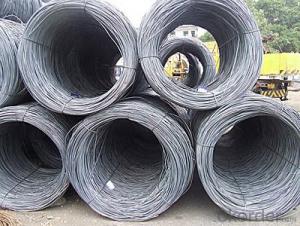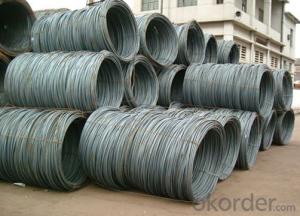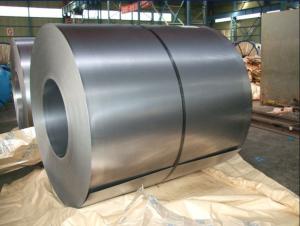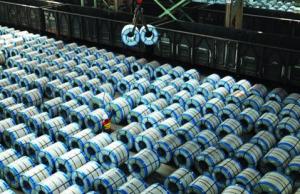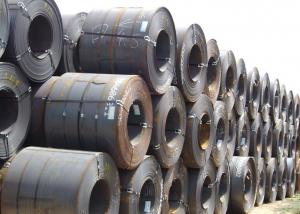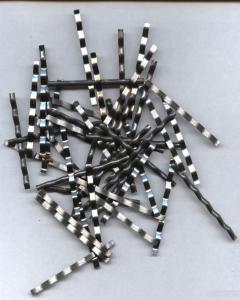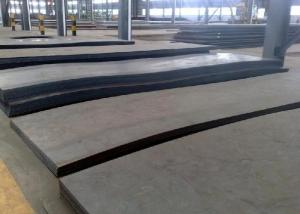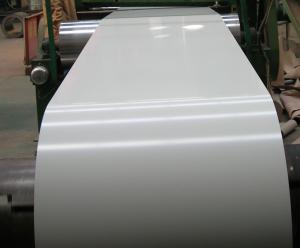Wire Rod 5.5
- Loading Port:
- China Main Port
- Payment Terms:
- TT OR LC
- Min Order Qty:
- -
- Supply Capability:
- -
OKorder Service Pledge
OKorder Financial Service
You Might Also Like
Product Description:
Specifications of Hot Rolled Wire Rod:
Steel Grade: Q195/235, SAE1006-1018B Standard: ASTM, GB
Diameter: 5.5mm, 6.5mm, 7mm,8mm,9mm,10mm,12mm,14mm
Type: in coil, coil weight around 2MT Alloy or Not: Alloy
Technique: Hot Rolled Place of Origin: China Mainland
Surface: round, no twisted, light and smooth Brand Name: HSKY
Chemical Composition: (Please kindly find our chemistry of our material based on Q195、Q235A and Q235B as below for your information)
| Trademark | Rank | Chemical composition (quality score) % | ||||
| C | Si | Mn | S | P | ||
| ≤ | ≤ | ≤ | ||||
| Q195 | 0.06-0.12 | 0.30 | 0.25 | 0.050 | 0.045 | |
| Q235 | A | 0.14-0.22 | 0.30 | 0.30-0.65 | 0.050 | 0.045 |
| Q235 | B | 0.12-0.20 | 0.30 | 0.30-0.70 | 0.045 | 0.045 |
Usage and Applications of Hot Rolled Wire Rod:
After hot-rolled the products shaped into coil and delivery as finished product, including round, square, rectangular, hexagonal and so on. Since most of the products are round, it is generally called wire rod. Carbon steel wire rod is widely used in construction and manufacturing. Carbon steel wire rod is mainly used for reinforcement of reinforced concrete and welded structure or reprocessed (roberts , nail, etc.) materials, especially used to produce wire drawing, welding electrode, nails, spring, electronic, precise machinery parts and so on.
Packaging & Delivery of Hot Rolled Wire Rod:
Packaging Detail: products are packed in coil, each coil weight around 2 MT, and then shipped by container or bulk vessel
Delivery Detail: within 45 days after received deposit or LC.
Label: to be specified by customer, generally, each bundle has 1-2 labels
Trade terms: FOB, CFR, CIF
- Q: How do steel products contribute to the construction of theme-based adventure parks?
- Steel products play a crucial role in the construction of theme-based adventure parks due to their strength, durability, and versatility. Steel is used in the framework and support structures of roller coasters, water slides, and other thrill rides, ensuring the safety and stability of these attractions. Additionally, steel is used in the fabrication of various park fixtures, such as entrance arches, railings, and signage, adding to the theme and aesthetics of the park. Overall, steel products provide the necessary infrastructure and creative elements that make theme-based adventure parks exciting and visually appealing.
- Q: What are the different types of steel scaffolding systems?
- There are several different types of steel scaffolding systems, including tube and coupler scaffolding, frame scaffolding, modular scaffolding, and suspended scaffolding.
- Q: How are steel tubes used in the manufacturing of furniture?
- Steel tubes are commonly used in the manufacturing of furniture to provide structural support, stability, and durability. They are used in the construction of chair frames, table legs, and other furniture components that require strength and stability. The use of steel tubes allows for the creation of sleek and modern designs while ensuring the furniture remains sturdy and long-lasting.
- Q: How do steel products contribute to the food and beverage industry?
- Steel products contribute to the food and beverage industry by providing essential equipment and infrastructure. Steel is used to manufacture food processing machinery, such as mixers, extruders, and cutting equipment, which helps streamline production processes and improve efficiency. Steel storage tanks and containers ensure the safety and hygiene of food and beverages during transportation and storage. Additionally, steel is used to construct commercial kitchens, refrigeration units, and packaging materials, ensuring that the food and beverage industry operates smoothly and maintains high standards of quality and safety.
- Q: How is steel used in the construction of sports facilities?
- Steel is commonly used in the construction of sports facilities due to its high strength and durability. It is used to create the framework and support structures of stadiums, arenas, and indoor sports halls. Steel's ability to withstand heavy loads and provide long-term structural stability makes it ideal for constructing large spans, roofs, and grandstands. Additionally, steel can be easily fabricated and assembled, allowing for efficient construction processes. Its versatility also enables it to be used in the construction of various sports facility components such as staircases, railings, and bleachers.
- Q: How can steel products be protected from corrosion?
- Steel products can be protected from corrosion through various methods such as applying protective coatings like paint or zinc, using corrosion-resistant alloys, electroplating, galvanizing, and implementing proper maintenance practices like regular cleaning and inspection.
- Q: What are the uses of steel wire mesh in filtration?
- Steel wire mesh is commonly used in filtration systems due to its durability and strength. It is widely utilized in various industries, including wastewater treatment, oil and gas, mining, and food processing. The mesh provides an effective barrier to separate solids from liquids or gases, ensuring the removal of contaminants and impurities. Moreover, its high tensile strength allows for efficient filtration without compromising the flow rate. The versatility of steel wire mesh makes it an ideal choice for applications requiring reliable filtration, such as sieving, dewatering, and particle separation.
- Q: How is steel used in the production of industrial machinery?
- Steel is used in the production of industrial machinery due to its exceptional strength and durability. It is commonly used for structural components, such as frames and supports, as well as for various machine parts, including gears, shafts, and bearings. The high tensile strength of steel makes it ideal for carrying heavy loads and enduring harsh operating conditions, ensuring the reliability and longevity of industrial machinery.
- Q: What are the different types of steel meshes and their applications?
- There are several different types of steel meshes with various applications. Some common types include welded wire mesh, expanded metal mesh, and woven wire mesh. Welded wire mesh is frequently used in construction, agriculture, and fencing due to its strength and durability. Expanded metal mesh is often utilized for grating, walkways, and filters due to its high load-bearing capacity and ventilation properties. Woven wire mesh is commonly used in industries such as mining, filtration, and security due to its versatility and ability to withstand heavy-duty applications. Overall, steel meshes serve diverse purposes and are chosen based on their specific properties and intended applications.
- Q: What are the different types of steel fasteners and their uses in machinery?
- There are various types of steel fasteners commonly used in machinery, including bolts, screws, nuts, and washers. Bolts are used to join two or more components together, providing strong and reliable connections. Screws, on the other hand, are primarily used to hold components in place or to fasten objects to surfaces. Nuts are paired with bolts to secure them tightly, while washers are used to distribute the load and prevent damage to the connected surfaces. These steel fasteners play a crucial role in ensuring the structural integrity and functionality of machinery.
Send your message to us
Wire Rod 5.5
- Loading Port:
- China Main Port
- Payment Terms:
- TT OR LC
- Min Order Qty:
- -
- Supply Capability:
- -
OKorder Service Pledge
OKorder Financial Service
Similar products
Hot products
Hot Searches
Related keywords
